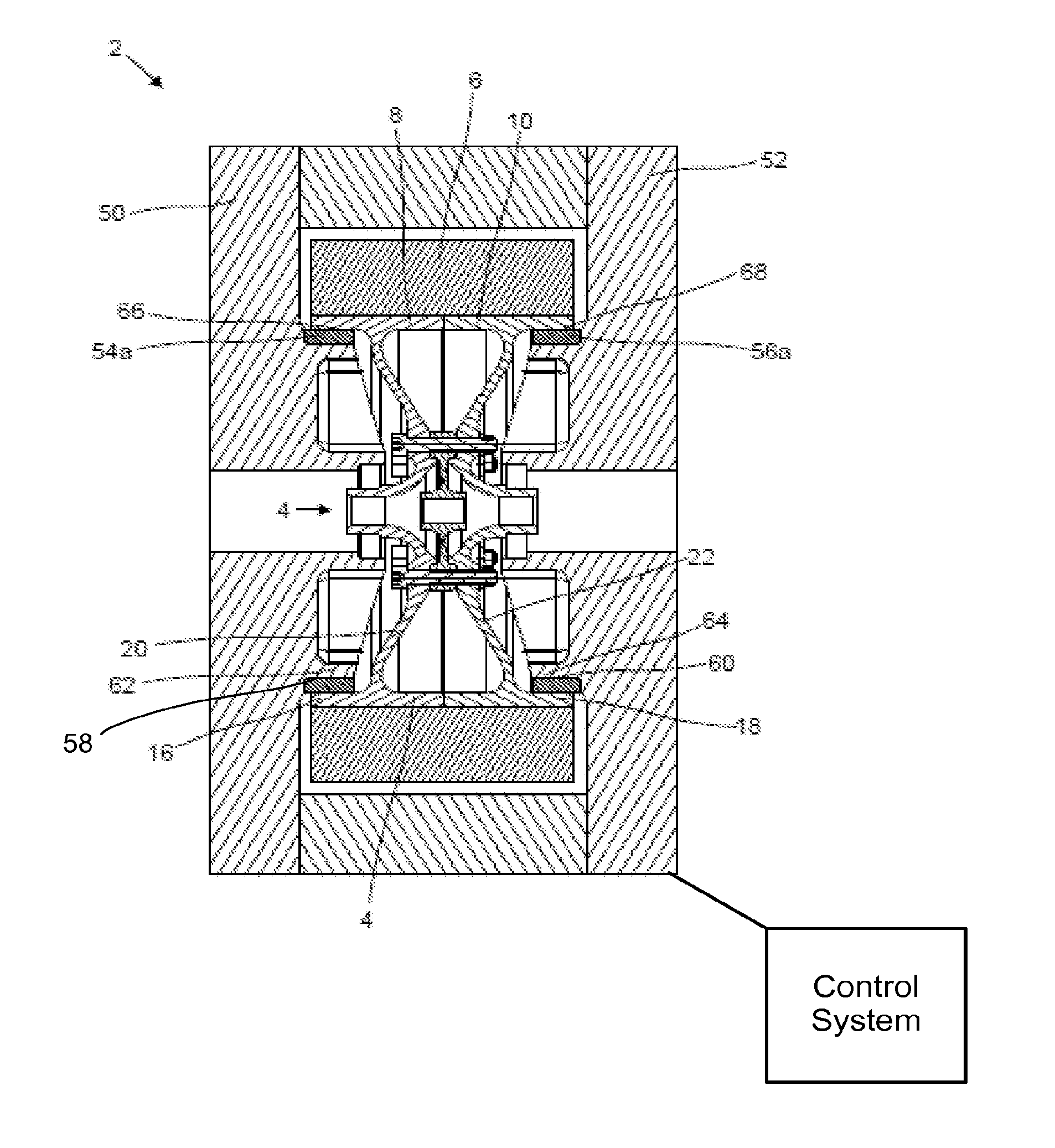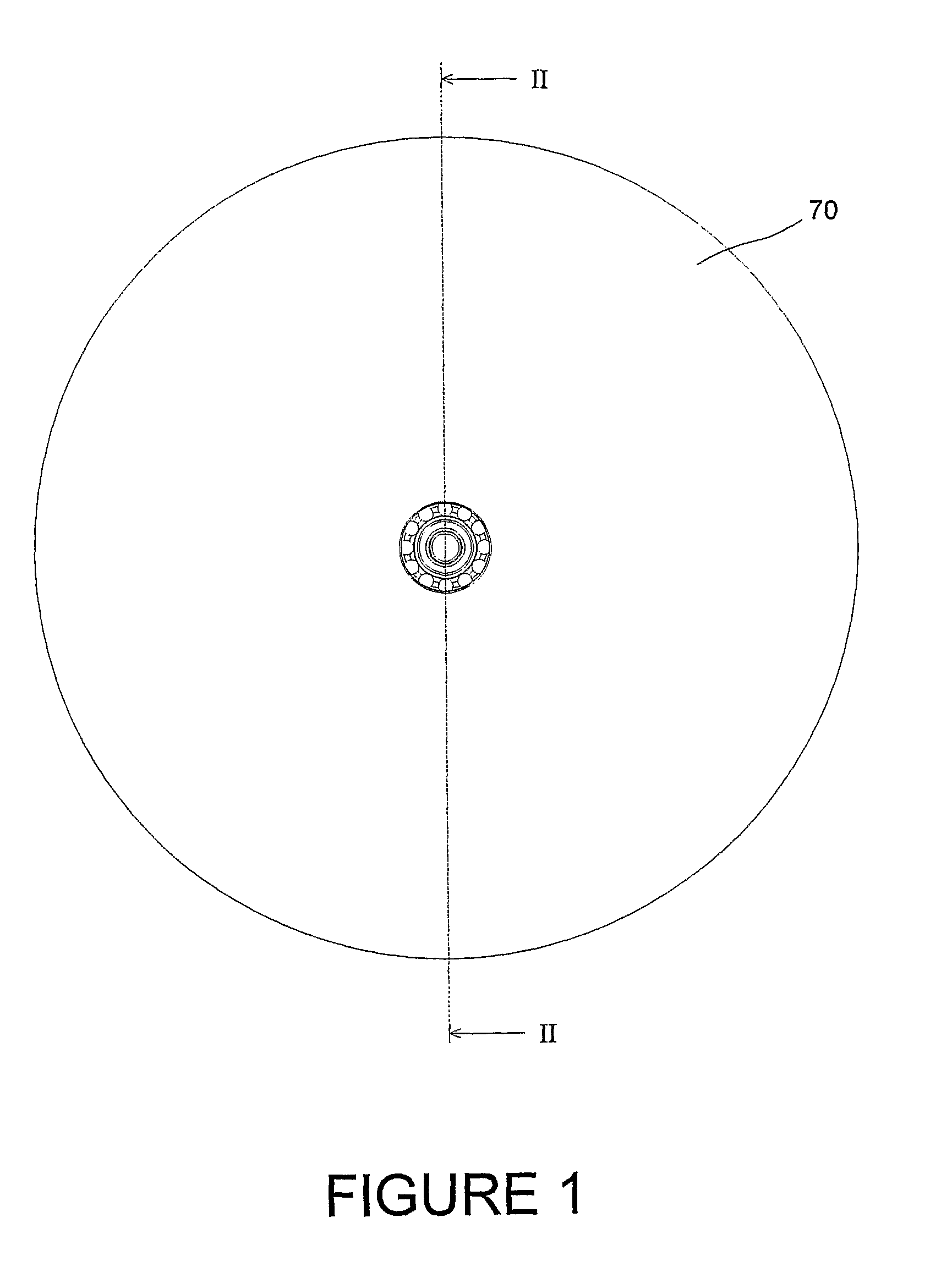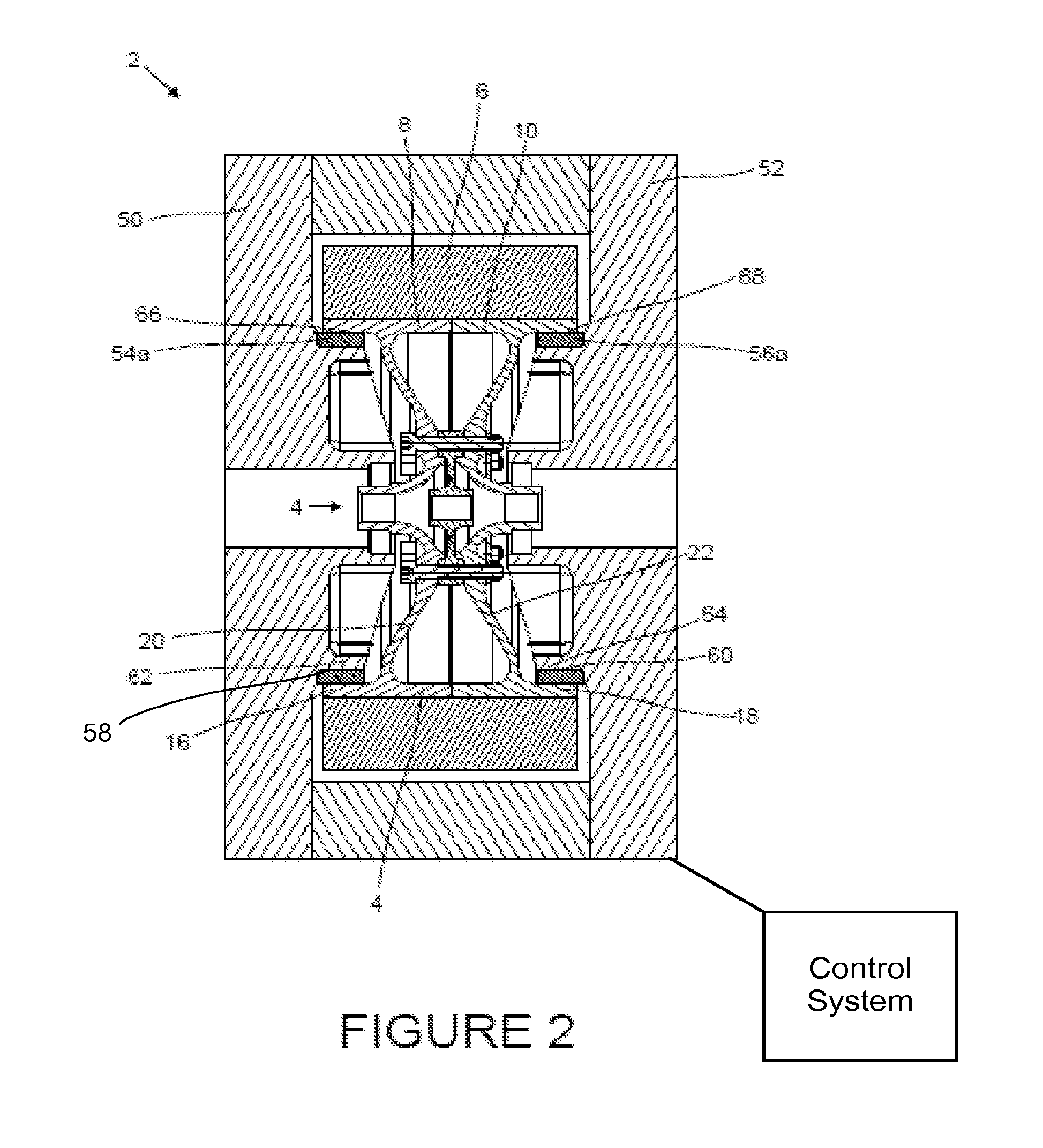High speed flywheel containment
a flywheel and containment technology, applied in the field of flywheels, can solve the problems of increasing friction and wear, increasing the speed of the flywheel within the vehicle, so as to achieve the effect of reducing friction and wear, and extending the time for the flywheel to break up
- Summary
- Abstract
- Description
- Claims
- Application Information
AI Technical Summary
Benefits of technology
Problems solved by technology
Method used
Image
Examples
Embodiment Construction
[0021]Referring to FIGS. 1 and 2, the flywheel 2 comprises steel hub arrangement 4 with a wound carbon fibre composite rim 6.
[0022]The hub 4 is formed of two halves 8, 10, each having a periphery 16, 18. The two halves 8, 10 of the hub are of equal diameter and the inner diameter of the rim 6 is selected such that when it is fitted over the outside of the hub arrangement 4, a radial interference fit is achieved, thus ensuring that the rim 6 stays in compression with the hub 4 at high operating speeds.
[0023]The hub is formed with webs 20, 22, which extend from the inside surface of the periphery towards the centre of the flywheel. The stress generated in the web by rotation of the flywheel is higher than that in the radial thickness of the rim, such that the primary failure mode of the flywheel will be the failure of the hub by cracking of the web.
[0024]The flywheel 2 is contained in a housing 70 comprising two end caps 50, 52 and a vacuum is maintained within the housing.
[0025]Annul...
PUM
 Login to View More
Login to View More Abstract
Description
Claims
Application Information
 Login to View More
Login to View More - R&D
- Intellectual Property
- Life Sciences
- Materials
- Tech Scout
- Unparalleled Data Quality
- Higher Quality Content
- 60% Fewer Hallucinations
Browse by: Latest US Patents, China's latest patents, Technical Efficacy Thesaurus, Application Domain, Technology Topic, Popular Technical Reports.
© 2025 PatSnap. All rights reserved.Legal|Privacy policy|Modern Slavery Act Transparency Statement|Sitemap|About US| Contact US: help@patsnap.com



